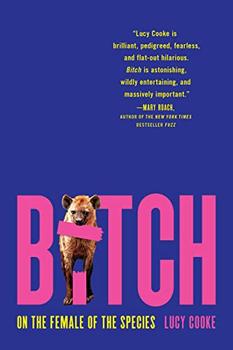Summary | Excerpt | Reading Guide | Reviews | Beyond the book | Read-Alikes | Genres & Themes | Author Bio

How We Discovered that Flowers Have Sex, Leaves Eat Air, and Other Secrets of Plants
by Ruth KassingerIt all started with the death of a kumquat tree. Author Ruth Kassinger tried everything she could think of, but the little tree in her conservatory still died. While many would have simply thrown the dead tree into the compost pile, Kassinger decided to embark on a scientific and historical journey through the world of plants and the people who have studied them. Although she began her explorations with a practical knowledge of gardening, she quickly realized that she knew little of plant physiology, or how the various organs of a plant work together to form a living system. And so she set about educating herself on these topics, as well as the history of their investigation, and chronicles her explorations in A Garden of Marvels: How We Discovered That Flowers Have Sex, Leaves Eat Air, and Other Secrets of Plants. Her aim was to become a better gardener, but her knack for storytelling ensures that we, the readers, get a good tale as well.
Kassinger explores the history of botany, from an antique belief in the mythical "vegetable lamb" borametz plant (a legendary hybrid plant/animal believed to grow a lamb from a stalk which was long and flexible enough to allow the lamb to graze on the surrounding vegetation) to a newly engineered, truly black petunia. She examines enormous pumpkins (and tips on how to grow them), promising new biofuels, pretty flowers that remove nickel – a toxic chemical element – from the soil, and store it in their stems and leaves, and the important but oft-overlooked microscopic fungi which form relationships with plant roots and allow their host plants to better access water and nutrients. This thoroughly researched, erudite work sets forth a history of botany in a surprisingly accessible and entertaining way. From lab to farm, from garden to library, Kassinger takes us on a remarkable journey through time and scientific discovery, delving with equal fervor into epochal history, historical scientific feuds and modern botanical research.
Kassinger then takes her newfound knowledge and applies its lessons to her own garden. She grows a "cocktail tree" that bears five kinds of fruit, and cures an ailing citrus tree with mycorrhizal fungi which forms a symbiotic relationship with the tree's roots, helping it to more efficiently absorb water and nutrients. She even devises a way for a plant in her garden to text her when it is low on water, through the use of a water sensor, a microchip and cell technology. (A service now available to the general public through organizations such as Plant Link and Botanicalls.
Kassinger has a knack for explaining and illustrating each idea clearly and thoroughly, but without pomposity or condescension. Her fascination for her subject is infectious, whether she is elucidating the distinction between xylem and phloem, or enthusing over the lettuce-like ruffles of a photosynthesizing sea slug. Welding disparate worldviews from history into a coherent narrative is no easy task, but Kassinger manages this with aplomb, contextualizing even the most outlandish theories (such as the above-mentioned borametz) in its time and intellectual perspective.
A Garden of Marvels joins our geologic past, the history of scientific thought, plant anatomy, and cutting-edge research into a seamless story of the wonders of plants, transforming a topic that many find prosaic into an engaging and informal look at the intricate wonders of the natural world. Overall, the book is charmingly told and the research vividly and accurately drawn. An informative and engaging read, A Garden of Marvels would be a welcome addition to the collection of any gardener, fan of natural history or botanist. Though suited for enthusiastic beginners, even the most erudite reader is sure to learn something new from this ingeniously wrought and thoroughly researched book.
![]() This review was originally published in The BookBrowse Review in May 2014, and has been updated for the
March 2015 edition.
Click here to go to this issue.
This review was originally published in The BookBrowse Review in May 2014, and has been updated for the
March 2015 edition.
Click here to go to this issue.

If you liked A Garden of Marvels, try these:

by Zoë Schlanger
Published 2025
Award-winning Atlantic staff writer Zoë Schlanger delivers a groundbreaking work of popular science that probes the hidden world of the plant kingdom and reveals the astonishing capabilities of the green life all around us.

by Lucy Cooke
Published 2023
A fierce, funny, and revolutionary look at the queens of the animal kingdom.
Your guide toexceptional books
BookBrowse seeks out and recommends the best in contemporary fiction and nonfiction—books that not only engage and entertain but also deepen our understanding of ourselves and the world around us.